¡Rico Mambo!
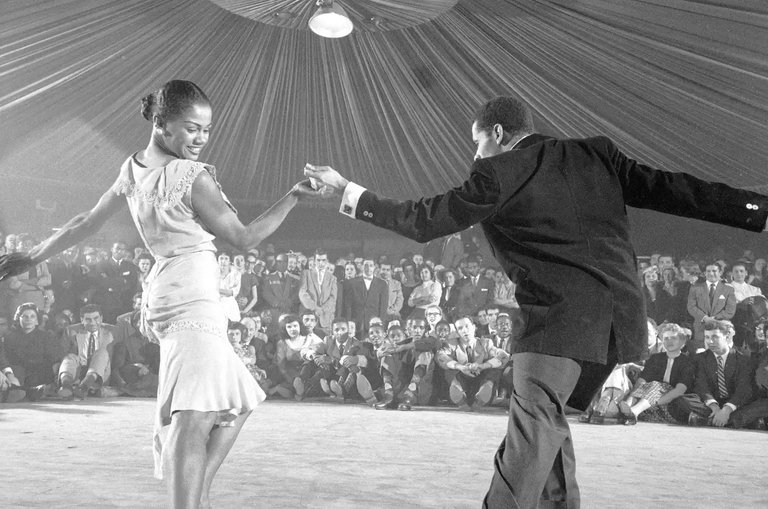
https://www.aboutespanol.com/el-baile-del-mambo-298231
El mambo forma parte de uno de los bailes y géneros de la música de Cuba.Su creador Dámaso Pérez Prado, desarrollo este género de gran y excelente calidad musical y bailable. La palabra Mambo ,es del origen del congo o bantú lo cual significa,baile,musica,fiesta o en algunos casos coro de voces.También puede describirse como conga ,bongo,los bongos eran los nombres que tenian los instrumentos que se usaban en estos bailes. También se puede apreciar como baile fusionado con los ritmos españoles,los bantú antes mencionados,y la musica Yoruba oriunda de Cuba.
The mambo is part of one of the dances and genres of Cuban music, its creator Dámaso Pérez Prado, developed this genre of great and excellent musical and danceable quality. The word Mambo, is of congo or bantu origin which means dance, music, party or in some cases chorus of voices, it can also be described as conga, bongo, the bongos were the names of the instruments used in these dances. It can also be seen as a dance fused with the Spanish rhythms, the Bantu mentioned above, and the Yoruba music native to Cuba.
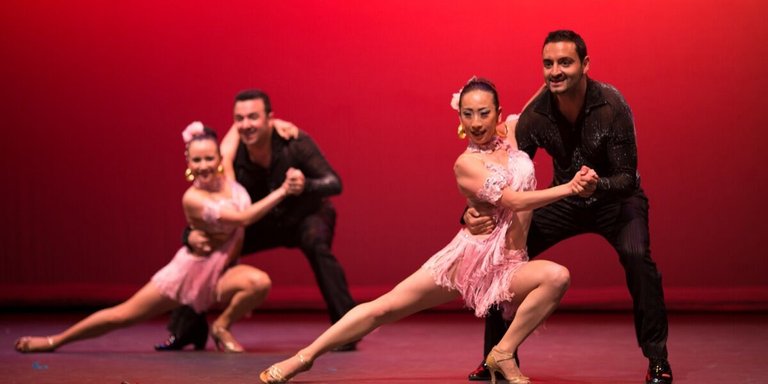
https://dancingcuba.com/es/category/mambo/
Se caracteriza por tener un ritmo sincronizado.Fusionado con la salsa y con movimientos que caracterizan mucho a la cultura cubana.Tiene un patron que se marca por una percusión ,que es la principal el bongo y la timba y un ritmo original de la conga.El bombo va con el tumbao y se marca con el bajo, que se alternan entre si para crear dicho ritmo.Se marca en un tiempo fuerte de 2 y 4,también en 1 y 3 en cada uno de sus compases.
En otros ritmos más complejos ,que es incorporada la clave de son,el mambo se baila en 2 de compás, que se puede arrancara bailar en 2 o 3 de las claves al sonar.Gran parte de la salsa que conocemos actualmente, tiene sus origenes en el mambo en su época, que fue dorada en los años 50 y 60.El cual, también fue el paso anterior al baile popular cubano chachachá .De lo que consideramos los bailes cubanos en la actualidad, el mambo a aportado mucho concepto y ritmos.
It is characterized by having a synchronized rhythm, fused with salsa and with movements that characterize the Cuban culture.it has a pattern that is marked by a percussion, which is the main bongo and timba and an original rhythm of the conga.the bass drum goes with the tumbao and is marked with the bass, which alternate with each other to create this rhythm.it is marked in a strong time of 2 and 4, also in 1 and 3 in each of its measures.In other more complex rhythms, where the clave de son is incorporated, the mambo is danced in 2 of compás, which can be danced in 2 or 3 of the claves when sounding.Much of the salsa we know today, has its origins in the mambo in his time, which was golden in the 50's and 60's.Which was also the step before the popular Cuban dance chachachá.Of what we consider the Cuban dances today, the mambo has contributed much concept and rhythms.
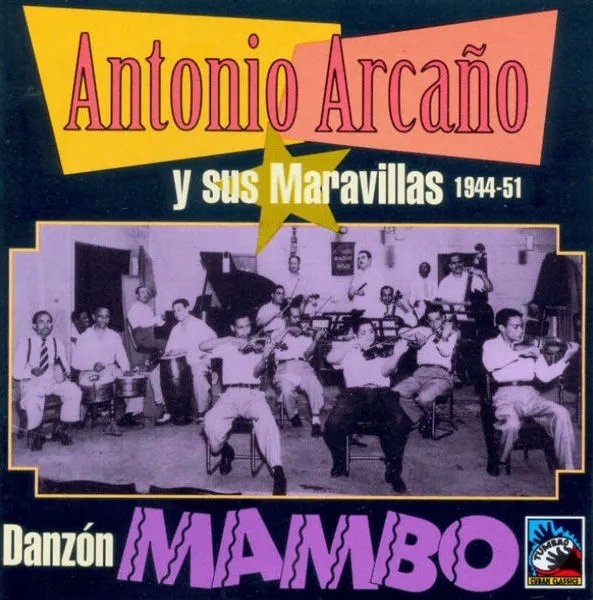
https://rateyourmusic.com/artist/arcano-y-sus-maravillas
Arcaño y sus Maravillas es una orquesta que fue fundada en los años 1937 ,por Antonio Arcaño al que le llamaban Monarca del danzón.Comenzo trabajando un danzón, que al terminar salio un mambo,con un tiempo de 4 x 4 lo tipico de los ritmos norteamericanos, los que hizo encajar con los rirmos cubanos.Al bailar este ritmo y dar el primer paso ,a lo que sus compañeros de su banda comenzaran a marcar ,el les repetia, ¡Mambo!Comenzó a hacer historia de la salsa en Estados Unidos ,junto a los hermanos Ismael López y Orestes,bajistas y pianistas ,que compusieron juntos esta primera pieza del mambo.Donde ambos formaron parte de esta orquesta ,donde en dicha década de los 40 ,monta Arsenio una orquesta ,donde le agrega piano,trompetas y turbadoras ,el cual repetía al ritmo del son, este mismo esquema de 4x4 mientras todos los instrumentos se fusionaban que sonaban con aires de jazz y el mambo se iba construyendo solo.
Arcaño y sus Maravillas is an orchestra that was founded in 1937 by Antonio Arcaño, who was called the Monarch of Danzón. He began working on a danzón, which when finished came out as a mambo, with a 4 x 4 beat, typical of North American rhythms, which he made fit with Cuban rhythms. When dancing to this rhythm and taking the first step to what his band mates began to mark, he repeated, Mambo! He began to make salsa history in the United States, along with the brothers Ismael Lopez and Orestes, bassists and pianists, who composed together this first piece of mambo, where both were part of this orchestra, where in that decade of the 40s, Arsenio mounted an orchestra, where he added piano, trumpets and turbadoras, which repeated the rhythm of the son, this same scheme of 4x4 while all instruments were merged to sound with airs of jazz and mambo was building itself.
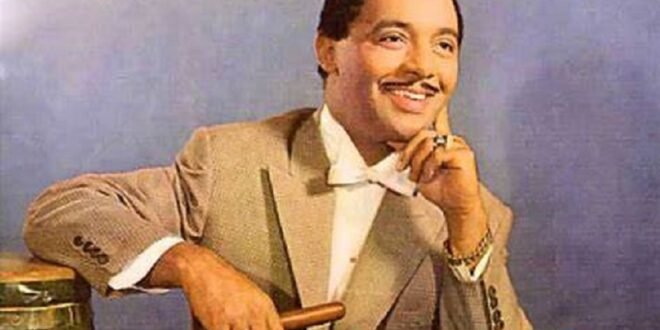
https://www.tvyumuri.cu/matanzas/resaltan-legado-del-matancero-perez-prado-rey-del-mambo/
Perez Prado nacio en Matanzas en Cuba ,emigro a La Habana en el año 1940, comenzó como pianista en clubs ,cabarets ,y orquestas donde desarrollo el ritmo del mambo.Sin ser un profesional pianista ,desarrollo su instinto ,el cual,sonó como si fuera un instrumento original de la percusión Escribió casi todo de una forma unísona, que fue muy potente al duplicar las voces y su orquesta toca las mismas octavas en los mismos ritmos. Contó con salas como el Cabaret de Tropicana, situado en La Habana ,brillaron allí y bailarines como son, Rolando Espinosa y Ana Gloria Varona ,apodados "Reyes del Mambo", se les hacia un poco difícil bailarlo, ya que el mambo en este tiempo demandaba una gran velocidad.
Perez Prado was born in Matanzas in Cuba, emigrated to Havana in 1940, began as a pianist in clubs, cabarets, and orchestras where he developed the rhythm of mambo, without being a professional pianist, developed his instinct, which sounded like an original instrument of percussion, wrote almost everything in a unison form, which was very powerful to duplicate the voices and his orchestra plays the same octaves in the same rhythms. He had rooms like the Tropicana Cabaret, located in Havana, shone there and dancers like Rolando Espinosa and Ana Gloria Varona, nicknamed "Mambo Kings", it was a little difficult to dance it, because the mambo at this time demanded a great speed.
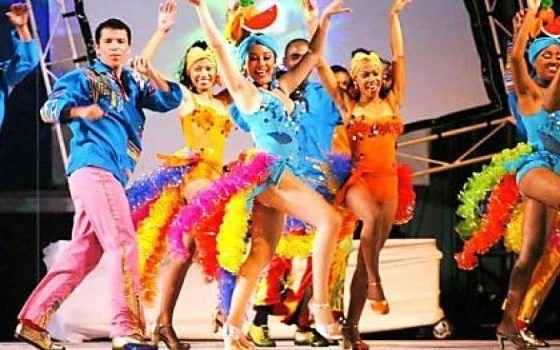
https://www.grimaldidance.com/que-es-el-mambo-como-se-baila/
Viajo a México en 1948, donde compuso Mambo°5, Que rico el Mambo ,entre otros clásicos. Entro también al cine ,el las Mamboletas y Rumbas bailandolos.En la década de los 50, marcó la época,tanto la música como este baile en el mundo entero. Pérez Prado, contó,como trato de hacer que la música y ritmos cubanos pudieran sonar en todo el mundo ,llegar a hacerse populares ,y a sonar esta melodía del mambo en todas las ciudades.Tanto así ,qué competía con géneros populares,como,el rock and roll,calipso y chachachá,que fueron muy populares en su momento.
He traveled to Mexico in 1948, where he composed Mambo°5, Que rico el Mambo, among other classics. In the 50's, he marked the epoch, both the music and this dance in the whole world. Perez Prado told how he tried to make Cuban music and rhythms sound all over the world, to become popular, and to sound this mambo melody in all cities, so much so that it competed with popular genres such as rock and roll, calypso and chachacha, which were very popular at the time.
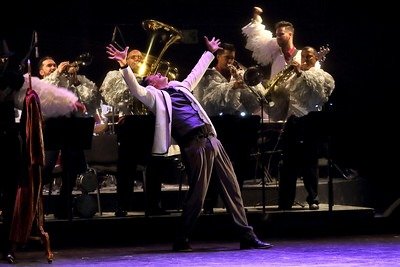
https://radioytvmexiquense.mx/index.php/2021/04/15/el-nacimiento-del-mambo/
Mientras,en New York ,sonaria con Joe Curbelo ,los afrocubanos,Machito,Tito Puente y Mario Bauza ,donde desde aqui,saldrian hacia Europa,a Italia ,donde formarian parte de otra banda sonora ,de algunas películas ,así como "Dolce Vita" ,la cual llego a filmarse en el año 1954 ,y "Mambo" la película ,con su actriz principal ,Silvana .En esta película,se integra por primera vez, en toda la historia,el órgano en esta música popular. Se incluyo también, el saxofón en estos ritmos cubanos,el cual hizo su primera aparición, donde le dio una gran fuerza a la rumba cubana,con la fusión entre ritmos cubanos y el baile norteamericano ,así como el son .A partir de este momento, fueron innumerables las bandas que hicieron mambo a lo largo de su historia, desde su creación hasta el momento. En la actualidad ,en la salsa y otros ritmos afrocubanos se utiliza mucho el sonido como transmisión, entre las descargas el ritmo del mambo.
Meanwhile, in New York, it would sound with Joe Curbelo, the Afro-Cubans, Machito, Tito Puente and Mario Bauza, where from here, they would go to Europe, to Italy, where they would be part of another soundtrack, of some movies, as well as "Dolce Vita", which was filmed in 1954, and "Mambo" the film, with its main actress, Silvana. In this film, the organ was integrated for the first time in history, in this popular music. The saxophone was also included in these Cuban rhythms, which made its first appearance, where it gave great strength to the Cuban rumba, with the fusion between Cuban rhythms and American dance, as well as the son. From this moment, there were countless bands that made mambo throughout its history, since its creation until now. At present, in salsa and other Afro-Cuban rhythms, the sound is used a lot as a transmission, among the downloads the rhythm of the mambo.
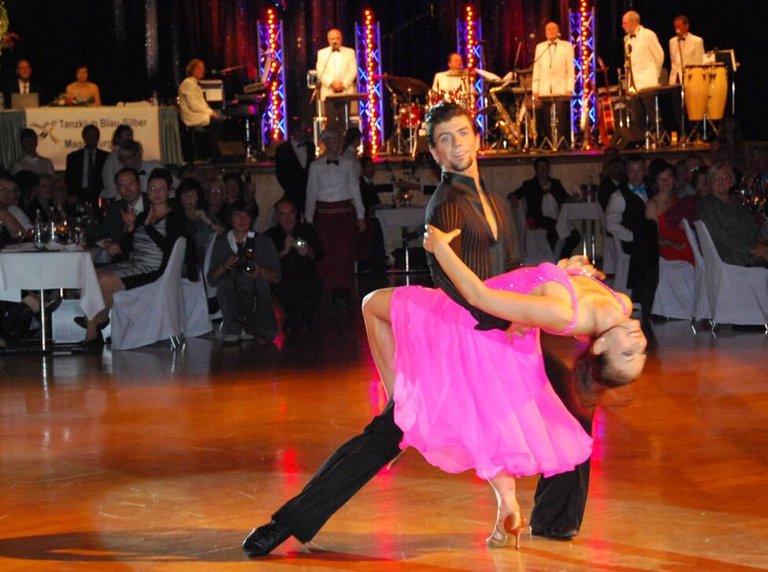
https://dancingcuba.com/es/category/mambo/
Entre la trompeta y el piano se hace una fusión la cual hace gala ,tanto asi que hay veces qué trasporta a miles de personas a la pista a bailar este sabroso ritmo .Se desconoce cuantos años seguira sonando ,pero es realmente impresionante todos los qué lleva desde su creacion, y aun en la actualidad, esta de moda un buen mambo,para marcar todo aquello que has aprendido y conoces.Ha llegado muy lejos este baile,y sus movimientos ,tanto así que se puede asociar con el casino o salsa ,tanto así que en fiestas,clubes nocturnos ,espectáculos ya sea solo o en pareja ,escenarios,cabarets, entre otros más, que es visto en el mundo entero,ya a más de 80 años de su creación,y de dar sus primeros pasos ,el mambo continua sonando por todas partes ,como uno de los bailes y ritmos mas populares que ha existido.
Between the trumpet and the piano there is a fusion which shows off, so much so that there are times when it transports thousands of people to the dance floor to dance this tasty rhythm. It is unknown how many years it will continue to sound, but it is really impressive all that has been since its creation, and even today, it is fashionable a good mambo, to mark all that you have learned and know. It has come a long way this dance and its movements, so much so that it can be associated with the casino or salsa, so much so that at parties, nightclubs, shows either alone or in pairs, stages, cabarets, among others, which is seen throughout the world, and more than 80 years of its creation, and take their first steps, the mambo continues to sound everywhere, as one of the most popular dances and rhythms that has existed.